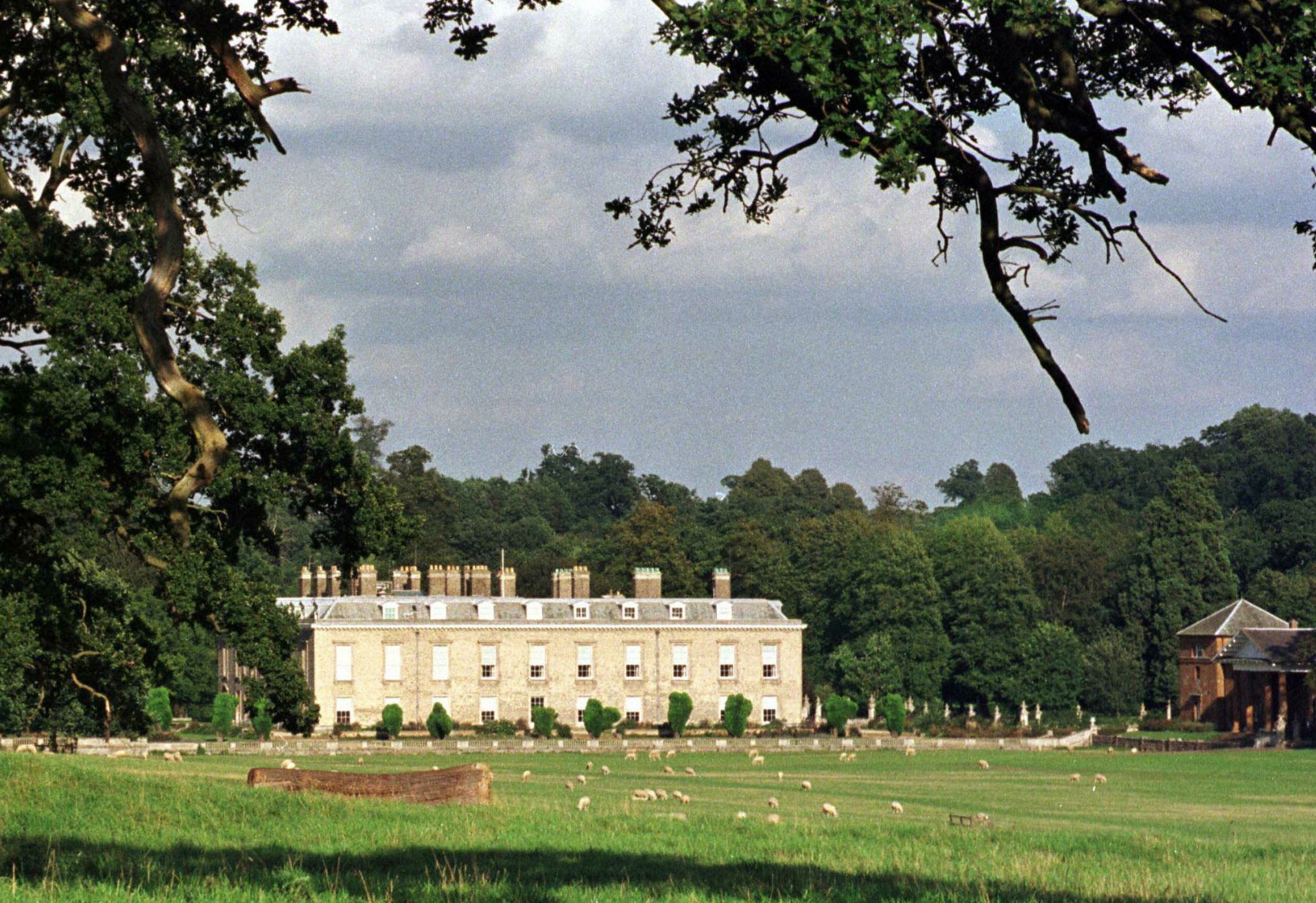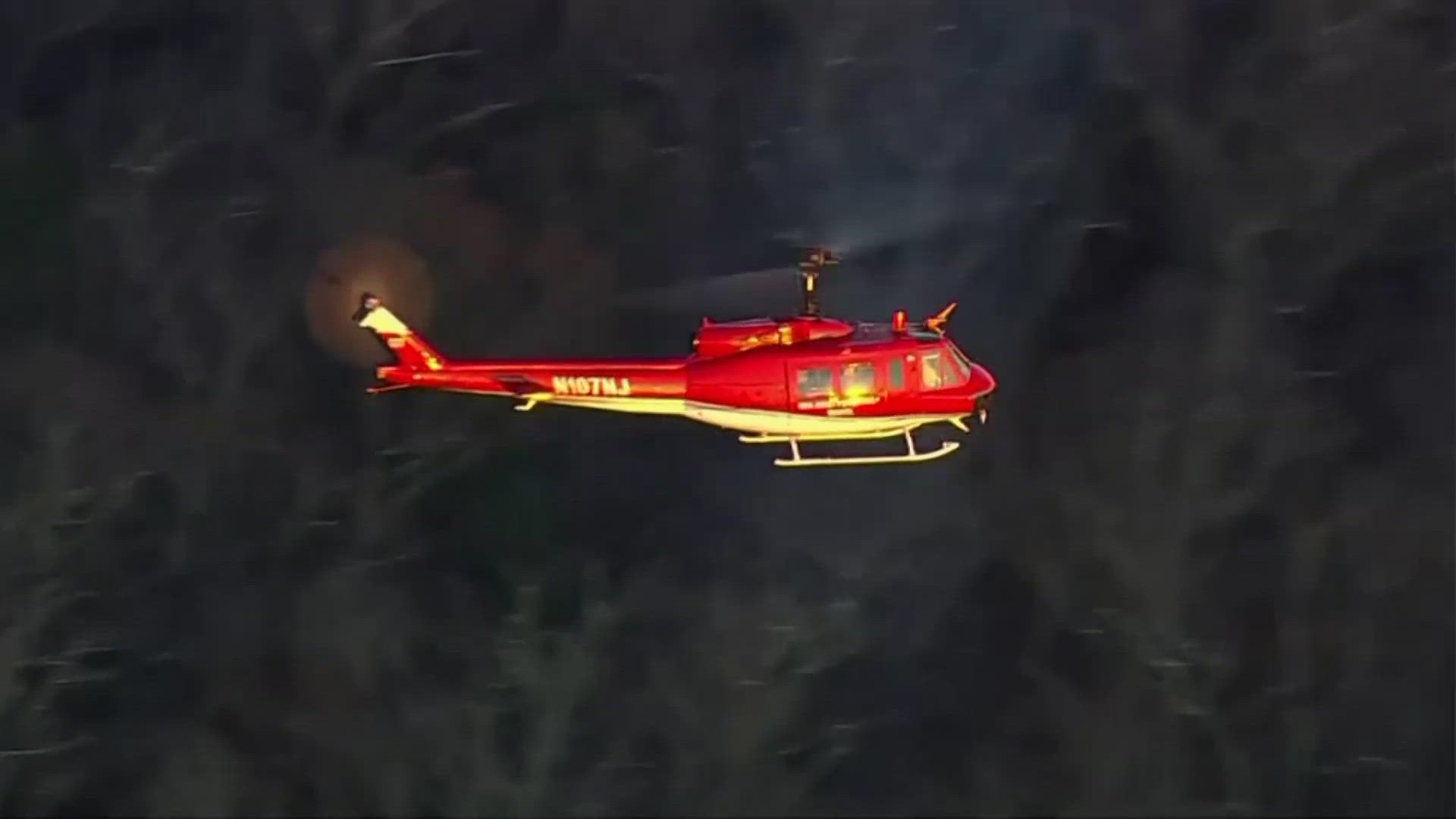Princess Diana is a larger-than-life figure in so many ways, and her biography contains moments large and small, public and private, royal and routine.
This timeline follows Diana from childhood to storybook royal wedding to parenthood and then, unfortunately, to a death that came far too soon.
1961: Diana Frances Spencer, born July 1, was the fourth of five children born to John Spencer, the 8th Earl Spencer and his first wife, Frances Ruth Roche.
1967: The Spencers separate when Diana is six years old. The divorce would not be final until 1969, following a child custody battle won by her father. In later years, her younger brother, Charles, blames the split on the loss of their first son, John, who died within hours of his birth in 1960, and the difficulty of producing a male heir.
1969: Diana's mother marries Peter Shand Kydd, an Australian wallpaper heir, and is accused by Shand Kydd's ex-wife of being the "other woman" in their divorce. The couple moves to the remote Scottish Isle of Seil.
1970: Diana, age 9, enrolls at Riddlesworth Hall, an all-girls boarding school in Norfolk.
1973: Diana joins older sisters Jane and Sarah at West Heath Girls' School in Kent, where she shows talent in music and sports but not academics. Later, she fails her O-level exams twice, and leaves without the equivalent of a high school diploma.
1975: Diana, 13, is given the title of Lady after her grandfather dies and her father inherits the title Earl of Spencer and the Althorp estate.
1976: John Spencer remarries, this time to socialite and local politician Raine McCorquodale, Lady Dartmouth, with whom he remains until his death in 1992. Though Diana and her brother called their new stepmother "Acid Raine," Diana later reconciled with her prior to her 1997 death.
1977: Diana first meets future husband Prince Charles, who at the time was dating her older sister Sarah.
1980: During a summer weekend in the country, Prince Charles notices Diana. Later that year, he takes her sailing on the royal yacht and invites her to Balmoral, his family's Scottish retreat to meet his family.
January 1981: After tabloids report a premarital liaison between Charles and Diana, Prince Philip writes a letter to his son urging him to either propose or end the relationship. Charles interprets it as an order to propose.
Feb. 24, 1981: Charles and Diana go public with their engagement (and Diana debuts her famous sapphire-and-diamond ring). On the night she moves out of her London apartment, her protective officer warns her, "I just want you to know that this is your last night of freedom ever, in the rest of your life, so make the most of it."
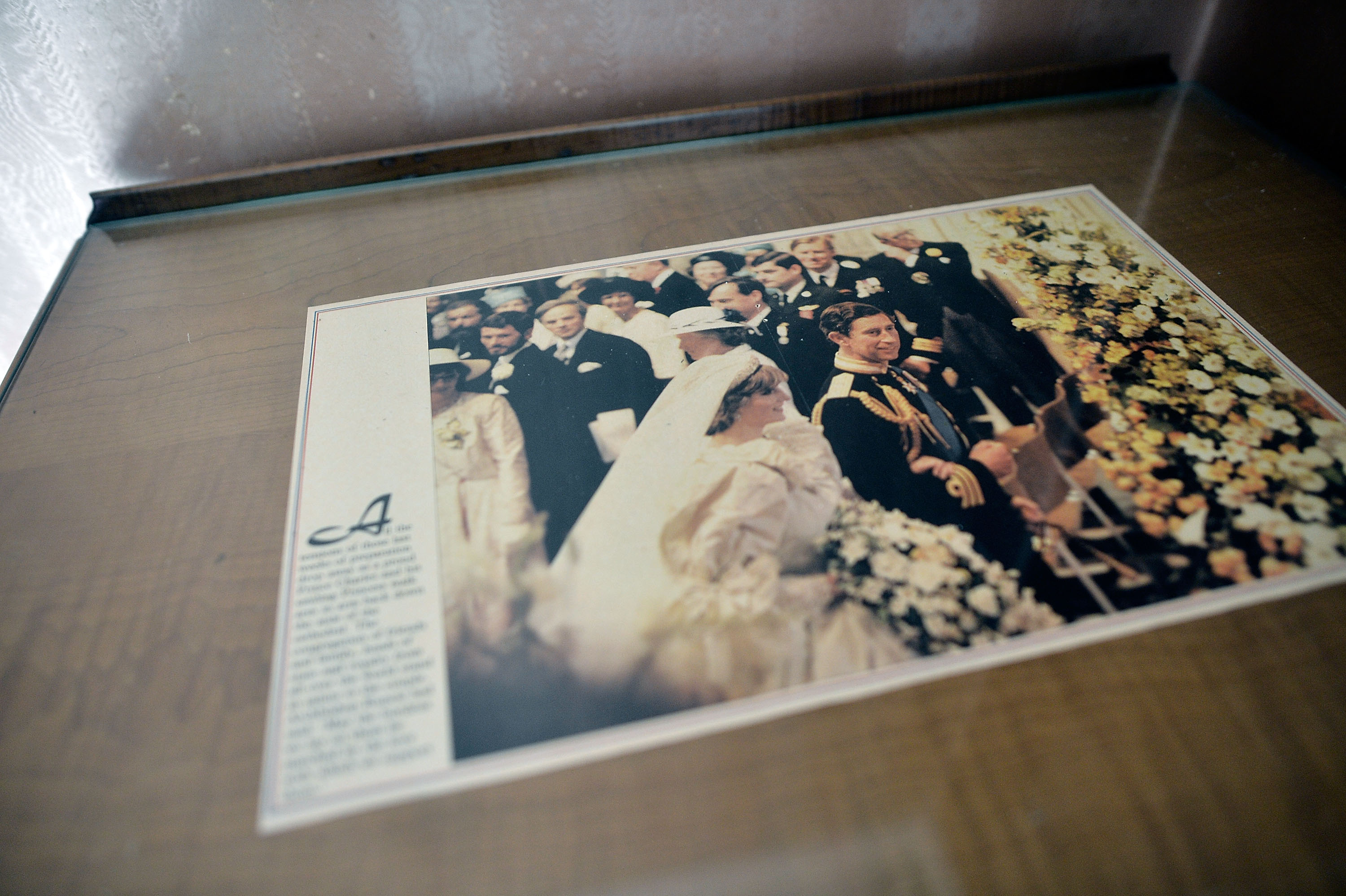
March 9, 1981: Diana bucks royal practice by wearing a plunging black gown by Elizabeth Emanuel for her first major post-engagement outing, which is criticized for being inappropriate. Afterward, she is bothered by media reports that she still has "an ounce or two of puppy fat," further inflaming her resurgent eating disorder.
July 29, 1981: Less than a month after her 20th birthday, Diana weds Charles, 32, at St. Paul's Cathedral, which better accommodated their 2,500 guests than Westminster Abbey, the usual venue for royal weddings. Two more deviations from tradition: The omission of the word "obey" from Diana's vows (intentional) and the delay of their first kiss until returning to Buckingham Palace (unintentional).
Nov. 5, 1981: The palace announces Diana is pregnant with her first child.
January 1982: Diana falls down a staircase at Sandringham at the end of her first trimester, which she later admitted was a deliberate cry for attention from Charles.
June 21, 1982: The couple's first child, Prince William Arthur Philip Louis, is born at London's St. Mary's Hospital, where his own children would be born three decades later.
March 1983: Together with Charles, Diana and 9-month-old son William embark on their first royal tour together to Australia and New Zealand.
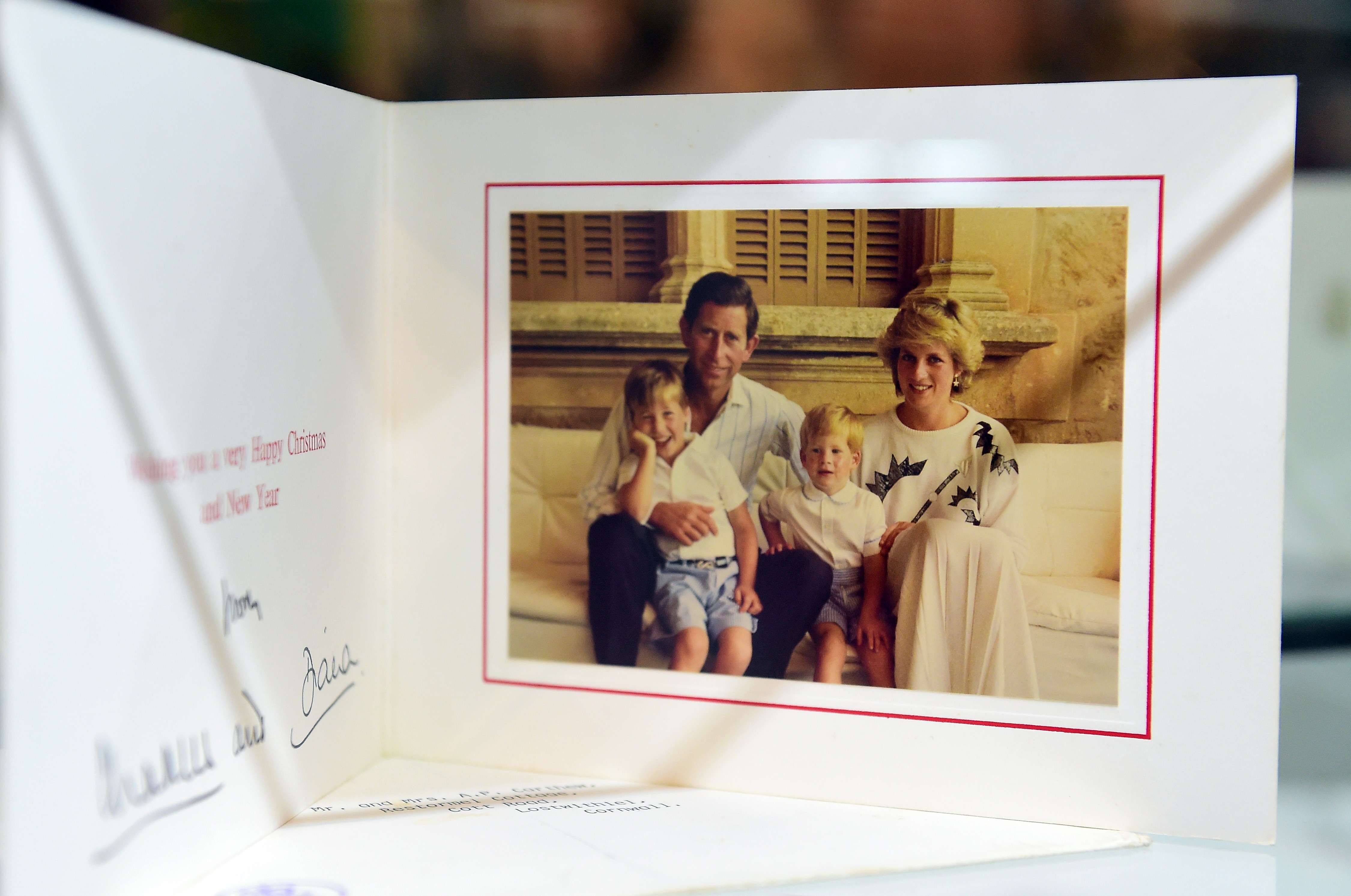
Sept. 15, 1984: The couple's second son, Prince Henry Charles Albert David, aka Harry, is born. Charles, who wanted a girl, complains, "It's a boy and he's even got red hair." Diana later tells biographer Andrew Morton, "Something inside me closed off," killing whatever love she had left for him and cementing her belief "Charles had gone back to his lady," Camilla Parker Bowles.
Nov. 9, 1985: First lady Nancy Reagan orchestrates Diana's memorable dance with John Travolta at the White House.
April 1987: At the peak of homophobia and fear of AIDS, Diana shakes hands with a man suffering from the disease without gloves at London's Middlesex Hospital. Her gesture is later described by journalist Judy Wade as "the most important thing a royal's done in 200 years" because it helped to dispel the misconception that the then-fatal illness could be transmitted by casual contact.
1989: During a 40th birthday party for Camilla Parker Bowles' sister, Diana dismisses her husband and confronts her rival about her ongoing affair with Charles. "I would just like you to know that I know exactly what is going on," Diana tells Camilla, warning her not to treat the princess "like an idiot." In tapes that would later comprise Andrew Morton's biography Diana: Her True Story, In Her Own Words, the princess counts it as one of her bravest moments.
June 1991: Diana keeps a two-day vigil at the bedside of Prince William after he suffers a severe head injury at boarding school, requiring surgery. Meanwhile, Charles is castigated for keeping his plans that evening. "What sort of father of an eight-year-old boy, nearly brained by a golf club, leaves the hospital before knowing the outcome for a night at the opera?” the Daily Express asks.
March 29, 1992: Diana's father, John Spencer, dies of a heart attack in London. Diana opposes Charles' offers to accompany her back from their Austrian ski vacation, believing him to be using her grief for a public-relations coup. However, the palace overrules her.
Aug. 20, 1991: Diana cuts short her annual royal family summer holiday at Balmoral to return to London to be at the bedside of longtime friend Adrian Ward-Jackson, who dies of AIDS-related illness two days later. She had quietly been spending time with him over the last year and had even brought Prince William to meet him.
May 1992: Journalist Andrew Morton publishes Diana: Her True Story in Her Own Words. Begun a year earlier, it consisted of no face-to-face interviews because she couldn't risk being seen as openly participating. Morton sent written questions via her friend Dr. James Colthurst, who recorded the interviews and ferried the tapes back to him.
August 1992: Britain's Sun newspaper reveals the "Squidgygate" tapes, alleged to be from a years-old phone conversation with alleged lover James Gilby, who referred to Diana by Squidgy, a pet name, he uttered dozens of times throughout the recording.
December 1992: Prime Minister John Major informs Parliament of the official separation of the Prince and Princess of Wales. The move comes a month after a disastrous official visit to South Korea, which forced the palace to realize it was time to end the charade.
January 1993: The "Camillagate" tapes surfaced, audio recordings of phone conversations between Charles and his lover, in which he expresses his wish to be her tampon.
December 1993: Diana announces her plan to retire from public life, at least for an indefinite period, and dramatically pares down her list of charity patronages.
Fall 1995: Diana meets Dr. Hasnat Khan, the Pakistani-born cardiac surgeon overseeing her acupuncturist's postoperative care and begins a secret, two-year relationship. He breaks up with her in the early summer of 1997 but unlike another lover James Hewitt, who later betrayed her with a tell-all book, Khan never reveals the intimate details of their time together. However, their relationship is turned into a widely-panned 2013 film starring Naomi Watts and Naveen Andrews.
Nov. 20, 1995: BBC's newsmagazine Panorama airs Martin Bashir's bombshell interview with Diana at Kensington Palace, which had been planned and carried out in secrecy. During the conversation, she discusses her past struggles with depression, bulimia and self-harm and admits to her own infidelities. But her most famous quote was in regards to the love triangle with her soon-to-be ex-husband and his longtime love, Camilla Parker Bowles: "Well, there were three of us in the marriage so it was a bit crowded."
August 1996: The terms of the royal divorce are finalized. Diana is awarded a lump-sum settlement of $22.5 million in cash, as well as about $600,000 a year earmarked to maintain her private office in addition to receiving permission to continue living in their Kensington Palace apartment. She agrees to give up any future claim of being queen. However, she is stripped of the title Her Royal Highness and is henceforth referred to as Diana, Princess of Wales, seen as a petty move on the part of the palace.
Jan. 15, 1997: Diana walks through a minefield in war-torn Angola to support the Red Cross' call for a ban on landmines and to showcase the de-mining work being done by one of the charities she patronized. Two decades later, her guide, Paul Heslop, recounted the nervous episode to the BBC: "This poor woman was about to go into a live minefield, a dangerous area, in front of however many hundreds of millions or billions of people on the news, and I thought back to the first time I went into a minefield, and I was petrified."
Aug. 30, 1997: A few months after her split with Khan, Diana and her new beau, Dodi Fayed, depart Paris' Ritz-Carlton Hotel after dinner to spend the night at his apartment. Their intoxicated driver, Henri Paul, later found to be three times over the legal limit, races through the Pont de l'Alma tunnel in an attempt to outrun the paparazzi. Shortly after midnight, he crashes their Mercedes into a cement pylon, killing himself and Fayed instantly. Diana and bodyguard Trevor Rees-Jones are taken to the hospital.
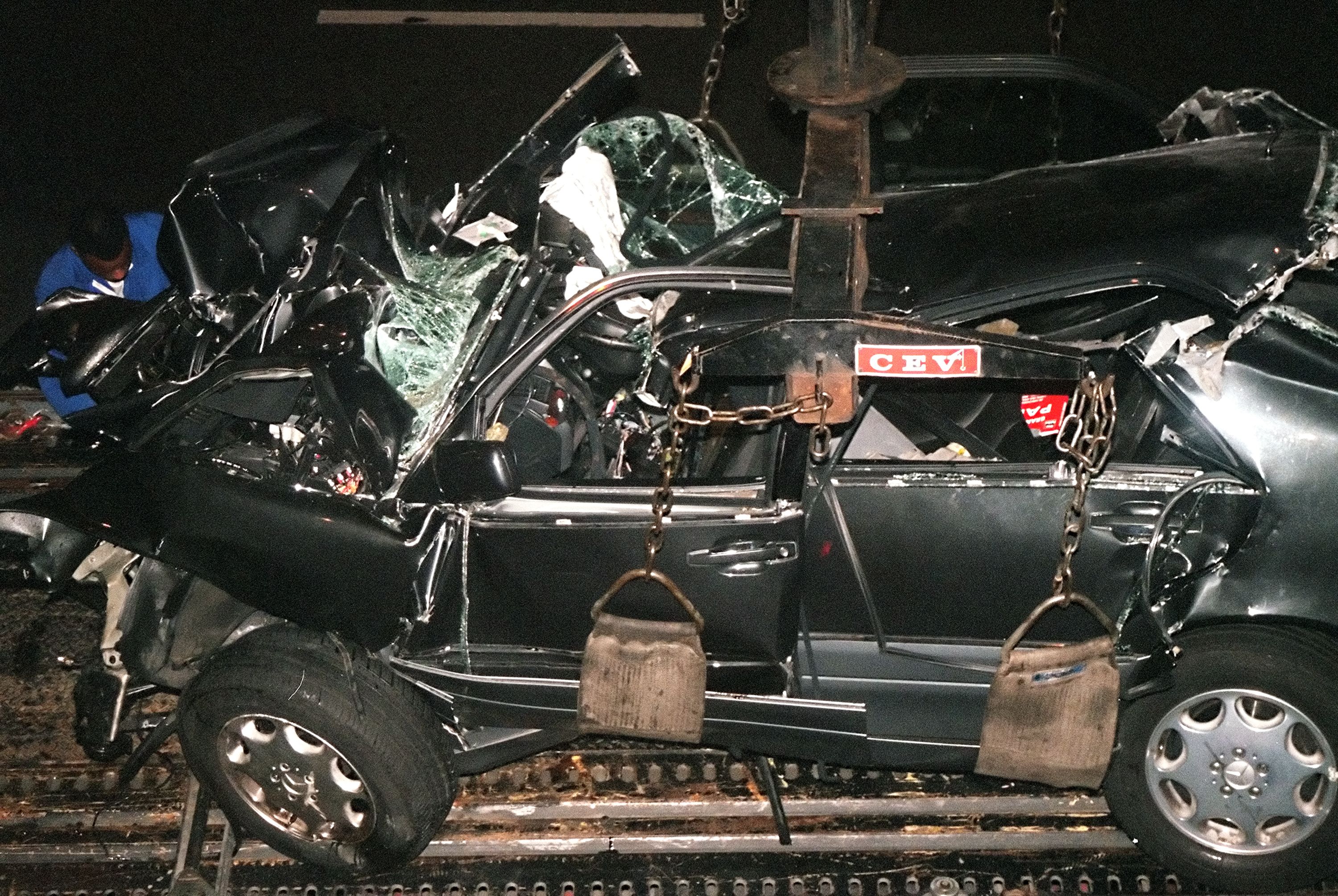
Aug. 31, 1997: Diana succumbs to her injuries (mostly cardiac in nature) and is pronounced dead at 4 a.m. at Paris' PItié-St. Salpêtrière Hospital at age 36.
Sept. 1, 1997: Charles accompanies his ex-wife's remains back from Paris, along with her older sisters, Sarah and Jane.
Sept. 6, 1997: Millions around the world watch Diana's funeral procession and service at Westminster Abbey. Later that day, her remains are transported home to her family's estate at Althorp, where she is buried.
